
The Arab people of Iran have lived for thousands of years in South Western Iran. They form 6-8% of Iran’s population and are deeply rooted in this ancient land. Under the Mosha’sha dynasty, Arabs acquired an independent entity, called Arabistan, in 1424, which was bound by Kermanshah and Sahne from the north, Ehsa’ and Qatif from the south, Kohgiluye mountains from the east, and Koot, and Emarah from the west. The king EsmailSafavi conquered Arabistan and ended 80 years of independent governance from the capital Howaiza, but he retained their full autonomy. Afterwards, the region was intermittently independent or fully autonomous.
During both the Safavid and Qajar dynasties Arabistan was one the four or six “Protected Cantons of Iran,” respectively. However, king Reza Pahlavi toppled ShaikhKhaz’al, the last Arab ruler in Arabistan. Following this event, for the past eight decades, the names of natural landmarks, towns, villages, neighbourhoods, and streets have been changed to Persian. In the past decade, we have been prohibited to even give non-religious Arabic names to our children. Furthermore, both the Pahlavi and the Islamic regimes have actively changed the demographic make of the province against native Arabs. The year 1925, when Arabs lost their political rule, marked the beginning of national oppression. This oppression consists of a set of economic, political, cultural, and linguistic injustices based on racist prejudices against the Arab people who are now known as the Ahwazi Arabs and live in the province of Khuzestan and other neighbouring provinces in Iran. Ahwazi Arabs speak Arabic, are Shi’ite Muslims, and possess a distinct folklore and culture from other nations of Iran.
Rebellious resistance against the Pahlavi regime and their anti-Arab agenda started from the first days after toppling the last Arab ruler of the region. This resistance transformed from its tribal form before the fifties to find its leadership in elements from cities across the province after this era. In 1958 Arabistan Liberation Front was formed seeking the independence of Arabistan region. The ALF was led by the High National Committee and was active in cities of Abadan, Mohammara (Khorramshahr), and Ahwaz. Three of their leaders were tried by martial courts in Tehran in 1963 and were executed the following year. Moreover, the shift from tribal to civil of the structure of the leadership and masses consisting Arab people’s movement was indicative of a transformation in the social fabric of the Arab society in Iran. It must be noted that due to discovery of petroleum in early twentieth century thus region was more industrial than many others in Iran.
Consequently, the evermore involvement of Arabs in the Iranian society, the growth of middle class and the influence of left-wing movements of the region during 1970s led to abandonment of the idea of independence to be replaced by solutions to the ethnic problem within the framework of Iran, by some groups among the resistance. Unlike, the constitutional revolution at the beginning of twentieth century, the Arab people had a direct role in the revolution of February 1979 accounting for tens of martyrs. Ayatollah sheikh Mohammad Taher Al Shobair Khaghani had a significant role as the spiritual leader of Arabs in this revolution. He dispatched a delegation of thirty-three individuals to Tehran to represent the Arab people in negotiations with the leaders of the revolution and The Provisional Government. The envoy – with myself as the spokesperson – was chosen from all the major cities of Arabistan of Iran and represented all the social classes of the Arab people. The following historic document contains the demands of the Arab people thirty-three years ago. These demands indicate the reaction of our people to national oppression of the Pahlavi era.
Demands during 1979 revolution
(Presented to the Provisional government in May 1979)
Respectable Prime Minister Mr. Mehdi Bazargan
The representative delegation of Msulim Arab people of Iran has gathered demands approved by the people during great rallies and demonstrations in various cities and villages and presents them to this government. These demands have also been approved by great Ayatollah sheikh Mohammad Taher Al Shobair Khaghani and include legitimate rights of the Arab people of Iran, as well as the right to autonomy within the Islamic Republic and the boundaries of Iran. Our people assert that matters of defending the country, long-term economic plans, foreign affairs, monetary system and international agreements are the duties of the central government. In addition, we condemn imperialism, racism and dogmatism and support non-Aligned discourse, rejecting colonial accords and agreements that harm Iran’s national independence. Our people, considers a region Khuzestan for autonomy that has been know by the historic name of Arabistan and geographically contains our people. The principle demands of the Arab people of Iran are as follows:
1. Recognizing the Arab people of Iran as a nation within the constitution of the Islamic Republic of Iran
2. Formation of a local committee in the autonomous region responsible for legislating local laws and overseeing their execution; participation of the Arab people of Iran in the Constituent assembly, national Parliament, and the cabinet proportional to their population.
3. Formation of Arabic courts to solve the issues concerning the Arab people of Iran according to laws of the Islamic Republic.
4. Use of Arabic as the official language of the autonomous region, taking into account that Persian is the official language of all Iran.
5. Education in Arabic at the Elementary level, ensuring that Persian language would still be taught in the autonomous region.
6. Opening of universities with Arabic instruction to meet the needs of the Arab people of the region; founding schools and educational institutions in all cities and villages, as well as reasonable consideration for scholarship for sending Arab students abroad.
7. Freedom of speech, production of print material, and production of radio and TV programs in Arabic, independent of national networks; censorship in any of these areas would be completely rejected.
8. Grant of priority to the Arab people of Iran for employment in the public and private sector, followed by those of other ethnicities living in the autonomous region.
9. Allocation of sufficient funds from sale of petroleum for development of industry and agriculture in the region.
10. Renaming cities, villages, neighbourhoods, and the region itself to their historic Arabic names, which were altered by the fascist Pahlavi regime.
11. Participation of young Arab people in the army and the local police with the possibility for their advancement to high ranks, which has been denied them so far.
12. Revision of land divisions among farmers, taking into account laws of the Islamic Republic regarding the right of ownership for those who work on the land.
Finally, we expect the government of Mr. Bazargan to refrain from compromising with reactionary and opportunistic elements when solving the issues of the Arab people of Iran.
The delegation representing the Muslim Arab people of Iran
Uprisings and repressions following the revolution
The Arab people were one of the first none Persian nationalities in Iran to be severely repressed by the authorities following the revolution. On June 31, 1979 by the command of admiral general Ahmad Madani, then governor of Khuzestan, along with masked agents of the armed institutions of the government, all cultural, political and civil institutes of the Arab people in Mohammara, Ahwaz, and other cities were raided. tens of people were killed or lost with no traces during the raids and concurrent demonstrations in Mohammara. Furthermore, hundreds of people were arrested at the time, tens of which were later executed. This incident marked the start of a brutal clamp down on other nations of Iran. Ahmad Madani was a member of National Front of Iran, whose name is placed alongside Dr. Mosaddegh on their website, attempted to win the presidential election of 1979 by murdering the Arab people and portraying himself as a hero of fighting separatist movements. Although, the above document, as well as others recounting the peaceful demands of the Arab people, indicates that no separatist demand or slogan was used; even such demands cannot be reason for the murder of Arab people.
Moreover, in May 1985, the government owned newspaper, Ettela’at, used the term “gypsy nomads” for Ahwazi Arabs, which triggered peaceful protests only to be trampled by the police forces. The situation, however, was calmed because of an apology voiced by Seyyed Ali Khameneyi during that Friday’s prayers. In addition to all this, the eight year war between Iran and Iraq resulted the most damage to the province. From 16000 martyrs of the war fallen in the province 12000 were Arab according to statistics released by the Martyr Foundation of Ahwaz. Therefore, the port city of Mohammara (Khorramshahr), which was once the star of Iranian ports, has not been completely rebuilt while unemployment and poverty are widespread as a result of racist and narrow-minded policies of the regime. These policies have led to construction of numerous dams and rerouting waters of Dez River to Qom, Karoon River to Yazd and Isfahan plains, as well as Kerman and Rafsanjan in the near future to be used for agricultural purposes and not as drinking water. Consequently, production of non-essential crops, such as cabbage and melons, in Isfahan and Yazd has increased at the expense of large losses to production of strategic crops, such as wheat and barley, and unemployment of Arab farmers in the province.
Add to this, the pollution caused by industrial waste disposal in rivers, low quality of air in Ahwaz and other major cities due to sand storms during 110 days every year and you would begin to realize the dimensions of the environmental disaster in the province. Dams built on rivers have caused some of the marshes in the province, such as the Hor el-Azim marsh and Dowraq marsh, to dry. This is a disaster because four rivers with highest water levels in Iran flow within the Arabistan region. Also, residents of Mohammara, Abadan, and Ahwaz are forced to drink such murky water that even the public media admits animals would not drink. Currently, Ahwaz is one of the most polluted cities in the world.
On April 15, 2005, the Arab people of Ahwaz, Hamidiyye, Ma’shoor (Mahshahr), Howaize, and other cities in the region staged peaceful rallies, that were unprecedented in their magnitude, to protest governmental policies. These protests focused on a leaked letter that was linked to Mohammad AliAbtahi, the head of the office of then president Mohammad Khatami. This letter requested a change in the demographic composition of the province to decrease the proportion of Arabs within ten years. Abiut fifty people were killed and hundreds were arrested by the police forces. I was arrested, as well, for condemning the murder of the Arab people. A few months later, a reactionary wave of violence swept the province culminating in bombing of oil pipelines and facilities, as well as some banks and other governmental institutions. The violence persisted for about two years resulting in the death many more innocent people.
The revolutionary courts of the region executed fifteen individuals in 2005 and ten others in 2006. In fact, Amnesty International had documented at least twenty-eight executions by July 2007, which have continued after this point. We must also add deaths under torture the number of those killed by the regime. Most recently four Arab political activists, three of whom were brothers, were executed on June 18, 2012 in Ahwaz. Two months prior to this, five other political, cultural and civil activists from Arab people of Khalafabad were sentenced to death. In the past year and half, at least five Arab political activists have been killed under torture in the province’s prisons. Of course, other activists are usually sentenced to extremely long prison sentences that are greatly longer than given to those with similar charges in the capital. Since 2005, the Arab people, every year, honour the memory of April 15 uprising through gatherings and rallies. Influenced by the Arab Spring, these events have become larger and more widespread.
National oppression of the Arab people
It is possible to categorize the national oppression of the Arab people in Arabistan of Iran in four general areas: racial discrimination, political, economical and cultural inequalities. The Arab people are constantly targeted by the racist discourse that is deeply rooted in the history and geography of Iran. In fact, Arabs were the first ethnicity to be aimed by racist and extremist nationalists in the contemporary period, the evidence of which is found in the racist literature of mid-nineteenth centuries up to now. Such literature is found in the works and deeds of some Persian thinkers, politicians, writers and poets; for example from Fath’aliAkhoondzade, AghakhanKermani, and Mahmoud Afshar to individuals like SadeghHedayat, Poordavood, and Akhavan Saless. In this matter, right wing and left-wing thinkers are alike; for instance, you can add to this list Marxist writers, such as Bozorg Alavi, Bagher Mo’meni, and Mirza Agha Askari. It can be said, with a degree certainty, that about 70% of writers and thinkers in Iran possess some sort of anti-Arab racist tendencies. To complicate the problem of Arab people compared to those of other non-Persian peoples, the anti-Arab sentiment has settled in the society’s subconscious since king Reza Pahlawi and become a part of the culture amongst the middle and even the lower classes.
The starting point of political inequalities and discriminatory policies against the Arab people was the armed interference of king Reza Pahlawi in the region, arrest, exile and murder of Sheikh Khaz’al, the rule of the region, and the ensuing loss of autonomy. As mentioned previously, before the chauvinist king Reza Pahlawi formed his highly centralized dictatorship, Iran was formed by the “protected lands.” The pre-Pahlavi political system constituted a form of traditional federalism where the ruler of the land of Arabistan enjoyed complete autonomy, similar to the authorities possessed by the current federal government of Kurdistan in Iraq. Right now, despite the fact that the Arab people constitute 70% of the population of the province, only 5% of important administrative posts, such as governor general, governors, or executive officers, is occupied by them. In the past 8 decades, no Arab has been appointed as the governor general of the province even among those affiliated with the government.
Regarding economical inequalities, it must be noted that despite annual income from export of the oil reaching to 100 million dollars, the majority of native Arabs of the province live in utter poverty. A large belt of Arab poverty encircles the minority forming the affluent core in cities of Ahwaz and Abadan. Non-Arab journalists from such agencies as Mehr and ISNA have claimed the poverty in the region to be worse than that observed in Africa. The poverty only grows in other cities, such as Mohammara, Hamidiye,Kafajiya, Ma’shoor, shoosh and Khalafabad, governmental reports reveal a high number of poor people receiving charities to survive.
According to the JomhooriEslami newspaper, connected to the government, 90% of the people in the town of DashteAzadegan (BaniTorof and Howaiza) suffer from malnutrition. Furthermore, the government has seized more than 200000 hectares of Arab farmers’ lands on the banks of Karoon from Shooshtar to Mohammara in the last two decades. These farmers have been marginalized in the outskirts of large cities away from their ancestral lands where they undergo the process of Farsization. Notably, unemployment rates in Arab cities of Mohammara and Abadan reaches 60-70% while the city of Dezful, with its mainly non-Arab population, has a one-digit unemployment rate in the same province. Therefore, the astronomical incomes from the sale of oil is spent mainly in Tehran and some other privileged cities.
The main facet of cultural inequities suffered by the Arab people is the educational one. Arab students have to learn Persian from the first year – or sometimes earlier – being deprived from education in their mother tongue. At the moment, no Arabic newspaper or magazine is allowed to be published for the use Arab people of the province. This means that 70% of the population receives 0% of the publications, while 30% of the population or none Arabs possesses 100%. Culturally, the province of Khuzestan (Arabistan) holds the low rank of eighteen among Iran’s provinces. The student drop-out rate in the province is 33% for elementary students, 50% for junior high school students, and 70% for high school students. Constituting 70% the population in the province, Arabs only form 6.6% of the students in the main public university, ShahidChamran Ahwaz. Furthermore, only fifteen out of every 10000 universitystudents in Iran are Arab, when there should be about 600 Arab students. Also, only 0.5% of books published are in Arabic, compared to 99.5% of Farsi books. Not only the government does not provide the Arab people with means of cultural growth, but also they use the oil money to fight their political and cultural activities, language, traditional apparel, and folklore. Security forces do not even allow the people to play local Arabic games. Furthermore, in two areas of illegal drugs and unemployment, the province of Khuzestan has the second highest rank in the country after Sistan-and-Baluchestan province and Kermanshah province, respectively.
These inequalities have strengthened tendencies to seek decentralization. Therefore, breaking this rigid centralization and spread of power and wealth across Iran is the only solution for eliminating the discrimination and resulting inequalities. So far, unbalanced economical and cultural development in Iran has been in favour of the center while neglecting the peripheries.
Therefore, real democracy is not compatible with discrimination and cannot be achieved without granting non-Persian peoples their rights. A true federal system will remove the abovementioned inequalities. This system, however, should be based on geographical and ethnic realities of Iran. In fact the historical pretext of the “Protected Lands” of Iran, where the country consisted of the cantons of Arabistan, Kurdistan, Azerbaijan, Gilan, and Khorasan, can be the starting point for determination of the federal units. Of course, now the regions of Baluch and Turkman people should be considered, as well, in a new federal system. In addition, to ensure that anti-Arab racism is stopped, this issue must be explicitly prohibited within the future constitution.
(Yousef Azizi is the General secretary of the Center for Combating Racism & Discrimination against Arabs in Iran. And this is the full text of a speech at a symposium held in the French Parliament under the title “The issue of non-Persian peoples in Iran,” on Sept. 14 )
Source:
Yousef Azizi, Sunday, 23 September 201, Al Arabiya News http://english.alarabiya.net/views/2012/09/23/239607.html
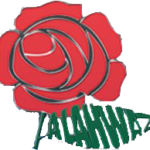
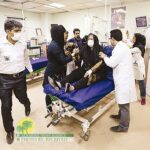
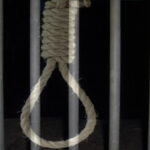
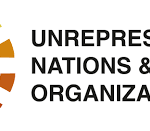







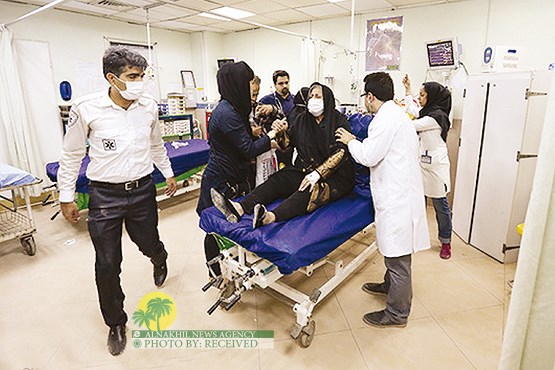




+ There are no comments
Add yours